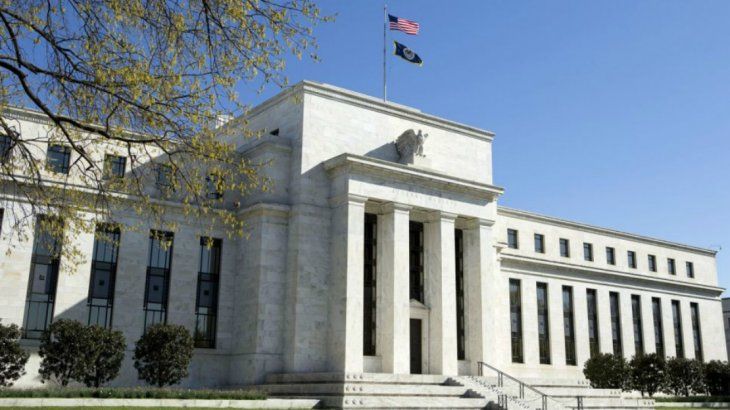The candles of the almost four months of government in La Rosada are about to be blown out while the private sector lights candles praying for the second quarter. They consider that between April and June, at least some of the dark clouds that loom over the medium-term horizon should clear. But what is perceived between the expectations of some and others is that Half of the market expects to see how economic policy will change from emergency to reactivationwhile The other half considers that, for now, all the macro scaffolding created by the Milei-Caputo tandem is that “this” only closes with a recessionThat is, yes or yes, the fall in inflation will come more from stagnation than anything else. Without a doubt a great challenge, above all, on the social front.
Today, and at least for a long time, only agriculture, mining and hydrocarbons will be the drivers of the level of activity. The rest, sectors that well reflect the feeling and future of the “street”, today only wonder if they have already hit rock bottom. They are none other than commerce, industry, construction, transportation and tourism. One of the possibilities under debate is whether the “Argentines”, given the lack of money, at least, will stop buying dollars and that flow will be used for consumption. They do not talk about dismantling the “canutes” but rather that, in the meantime, the new surplus flows do not go to the savings dollar. We will see. For now, The question remains unaffected about the patience of those who did not vote for the government. When? There is talk and speculation, with the end of June as the possible time when there will be fewer people who believe that things are going to be better.
Bopreal and Lecap: the views of the market
For now, warm celebrations at the tables generated the new resolution for the primary subscribers of the importers’ bond (Bopreal) who have sold them against Cable; In case you want to buy CCL dollar for the difference between the nominal value and the sale value, you should now know that you do not have parking, you do not have advance notice to exceed $200,000 and you may have security taken or financing in the capital market. Something important, a large holder of this bond noted, is that the market value of the operations, whether through sale against Cable or transfer of securities, should not exceed the difference between the nominal value of the Bopreal and the dollars obtained from its sale.
And speaking of bonds and rates, the landing of the Lecap (Fixed Rate Treasury Bill) which, although it marked a significant change towards the normalization of debt in local currency, also aroused love and resentment. The only fixed rate sovereign instruments that existed were the Treasury Bond in pesos 2024 (Boncer T3X4) with a known final CER and the Treasury Bond in pesos 2026 (TO26). The issuance of the new Lecap would be the first step in the formation of a new sovereign curve; which is not a minor issue since having a fixed rate curve with a term comparable to instruments tied by inflation It allows us to infer what the inflation and interest rate market sees, nominal and real, for 2024.
Now, the “cons” They point out that the brand new capitalizable bill captured the interest of investors seeking to capitalize on falling inflation expectations. However, its monthly effective rate of 5.5% discounts that the inflation and devaluation paths will be successful, with prices marking a sustained deceleration towards the end of the year and a competitive exchange rate, despite the delay accumulated since December and the one to come. in the coming months, without considering latent economic and political risks. For this reason, the “cons” prefer instruments linked to inflation and devaluation and at market prices they do not see attractiveness in the new Lecap and opt for alternatives indexed in the universe of CERs and Dollar-linked.
Javier Milei IEFA Latam.jpg
The Argentine experiment, embodied by Javier Milei, attracts the attention of foreign investors and analysts.
Photo: Juan Vargas – NA.
Visitor interest in the Argentine experiment
Perhaps what the visits of investors, investment banks and funds leave most behind, in addition to the interest in the new Argentine experiment, is what they say after returning to their lands of origin. A Teuton, with great track record Creole, not at all a fan of Kirchnerism, did not leave the libertarian President very well either, whom he characterized as having autistic features, who believes he is on a divine mission and does not mince words in his sermons. For him, both Milei and Cristina, narcissistic, self-centered in love with power, are personalities who do not trust anyone who does not belong to his inner circle. But the worst thing is that both do not seem willing to create a minimum basic consensus in Argentina and govern for everyone.
Another European manager acknowledged that Milei attracted a lot of attention and interest with his eccentricity, but one should not cling to Milei alone when looking at Argentina, because regardless of the libertarian’s political destiny, there are reasons for optimism that the country will not abandon the path of pro-market reforms in the short term. He left with the idea that, in principle, potential majorities would be available in Congress, and sooner or later, it should be possible to bring them together for the adoption of the necessary reform laws, with or without Milei. In any case, Milei’s merit is that he thoroughly shook up the structures and the status quo.
For his part, a Danish banker, who visited Chile and Argentina, commented that the trans-Andean country is in a political deadlock after two failed attempts at constitutional amendment, and explained that the most leftist government in memory still has two years left. , but is unlikely to get the opposition-dominated Congress to pass major reform proposals. On the other hand, he said of the Argentine situation that it cannot be called stagnation, that President Milei, despite lacking a majority in Congress, managed in a short time to balance the fiscal accounts and drastically devalue the currency. A colorful fact: the interlocutor of the Casa Rosada to present the Government’s plan was the Minister of the Interior, Guillermo Francos.
Conclaves here and there and Gregory Makoff’s book
While the EMTA Forum is taking place in Buenos Aires, highlighting the panel on the outlook for the Argentine economy moderated by Ramiro Blazquez Giomi (BancTrust) in which they will participate Paula Gandara (AdCap), Gustavo Cañonero (CMF), Juan José Battaglia (Cucchiara) and Eduardo Levy Yeyati (UTDT), follows from rotation the people of BCP Securities hand in hand with Walter Molano which brought a group of investors in sovereign bonds, with large meetings with members of the Government leadership, the BCRA, the Treasury Palace, the Foreign Ministry and leaders of Congress. At the BCRA they were with the president and the head of the trading desk. They took a very optimistic and positive image, in part, because there will be a constant accumulation of reserves throughout the year, thanks to a very strong harvest, Vaca Muerta and a low demand for dollars. Of course, the low demand for dollars is due to the economic recession and lower imports, and also to the exaggerated demand for pesos. For visitors, neither is a good long-term recipe.
But there are also conclaves outside the country on the Argentine case, such as the one held in São Paulo by the Brazilian BBVA team together with IBEF, the largest group of financiers in Brazil, which baptized “Navigating the Argentine economic terrain”. Analysts Marcos Dal Bianco and Delfina María Nallim analyzed the current economic situation in Argentina and shared knowledge about effective exchange risk management strategies and possible economic opportunities to face this current financial situation. Who were in the game? More than 65 companies from different Industries with interest in the region such as BASF Chemical, DSM- Firmenich, Stellantis, Ford, ADM, Cargill, Corteva, Sealed Air, CHS, IBM, Mercedes Benz, Braskem, Bunge, among others. In this type of meetings locally and abroad, Gregory Makoff’s book continues to be discussed, as mandatory reading, about the multiple angles of the Argentine default and the subsequent litigation that involves many actors, such as the different governments of the last 20 years. , large and small investors, the so-called vulture funds and the IMF. Even at the end of May at the Finance for Development Lab, at the next DebtCon7 conference in Paris it will be the focus of a debate.
federal reserve.jpg

The Fed and its inflation targets. One of the axes that analyzes the market.
The Fed’s course, in the spotlight
Another who remains in the limelight is the former PIMCO, Mohamed El-Erian, who at his ill-fated Queens’ College, in Cambridge, commented – in response to the latest statements from the Fed – that his observations in recent months on the changing macroeconomic paradigm global multi-year global economy, from a world of insufficient aggregate demand to one of insufficiently flexible supply, and what it means for current inflation targets, served as a catalyst for some interesting discussions with public and private sector economists. While he acknowledges that the sample may or may not be representative, most are iterating toward the view that The Fed’s 2% inflation target may not be the correct spot target, which would constitute an appropriate lower end of a longer-term target range. That the first step of an inevitably gradual transition involves a more coherent use of the expression “long term” by policy makers when talking about reaching 2%. That we should not expect any explicit indications deviating from the 2% inflation narrative any time soon. As for the divergence of views/uncertainties, they tend to relate to the speed of the endogenous policy transition and, with it, whether the balance of probabilities between rates ends up right, too loose, or too tight.
In this regard, the people at BlackRock remember one of Mark Twain’s favorite aphorisms that says: “It’s not what you don’t know that gets you into trouble. It’s what you know for sure isn’t the case.”. They explain that for bond markets, the certainty that the Fed would cut interest rates in March and at each FOMC meeting that followed led to “troubles” in the form of disappointing yields to start the year. Looking ahead, the outlook for bonds has improved as market expectations align more closely with the Fed’s planned three rate cuts. This creates a better entry point for the duration, and lower recession risk supports the case for adding credit exposure to portfolios given attractive yield levels. But even with greater alignment of Fed projections and bond market prices, expectations for rate cuts reflect the view that policy is restrictive, another certainty that may not be, as the economy showed no evidence deceleration. And easing financial conditions due to changes in asset prices could further delay the timing and number of rate cuts this year. This poses a risk to the outlook for bonds and makes the timing of positioning for curve steepening important to avoid losing solid risk-adjusted returns on short duration instruments in the absence of yield curve normalization. We will see.
Source: Ambito




